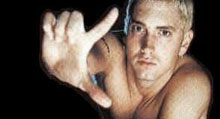Basic Teaching Techniques for Moving Images
The eight basic
techniques described on these pages are designed to
help you unravel the codes and conventions of the
moving image, and enable you to use a wider range
of film and video texts in the classroom. As you
and your pupils unpack the layers of meaning, you
will be helping them to develop their general
skills as more critical, attentive and
knowledgeable readers of the moving image.
Learning Objective
The
number, sequence and duration of shots in a
moving image sequence all contribute to its
meaning and are created in the editing
process.
• Screen time and ‘story time’ are usually different: the editing process ‘manages’ the story time for us.
• Each new shot should provide new information or impressions: shot changes are not merely ‘to keep viewer interest’.
• The pace and rhythm of editing and the types of transition used also contribute to meaning.
• Sound transitions may not match shot transitions: in drama especially they may anticipate them and this can function to
maintain or develop moods such as suspense.
• Certain kinds of shot sequence are highly conventional: eg shot/reverse shot in a conversation or interview; or a character looking off-screen is likely to be followed by a shot of what they are looking at.
• Screen time and ‘story time’ are usually different: the editing process ‘manages’ the story time for us.
• Each new shot should provide new information or impressions: shot changes are not merely ‘to keep viewer interest’.
• The pace and rhythm of editing and the types of transition used also contribute to meaning.
• Sound transitions may not match shot transitions: in drama especially they may anticipate them and this can function to
maintain or develop moods such as suspense.
• Certain kinds of shot sequence are highly conventional: eg shot/reverse shot in a conversation or interview; or a character looking off-screen is likely to be followed by a shot of what they are looking at.
Key Questions
How
long is this sequence? How much
‘story time’ does it represent?
What new information or impression is each new shot giving us?
What information or impression does each change in sound give us?
Why is this kind of shot transition used? What difference would it make if another type of transition were used?
Why are the shots of this length? Does the overall time-scheme of the shots build up a rhythm or a pattern? What is the effect of this?
•
What new information or impression is each new shot giving us?
What information or impression does each change in sound give us?
Why is this kind of shot transition used? What difference would it make if another type of transition were used?
Why are the shots of this length? Does the overall time-scheme of the shots build up a rhythm or a pattern? What is the effect of this?
•
Spot the Shots
• After their first viewing of a short moving image sequence, pupils guess at the number of shots used.• On second viewing, they mark each change in shot, scene location and sound (use pause button if necessary).
• On third viewing they look carefully at how the shot transitions are created (eg cuts, mixes, fades, wipes etc) and whether the sound transitions happen at the same places.
• They should also time each shot.
Possible follow-up:
• Create a script or storyboard to support their analysis of the sequence. Variations on the sequence can then be hypothesised: eg
eliminating shots or changing the order of the sequence.
• If the software is available, pupils could digitise and re-edit the shots to try out different sequencing and timings.
